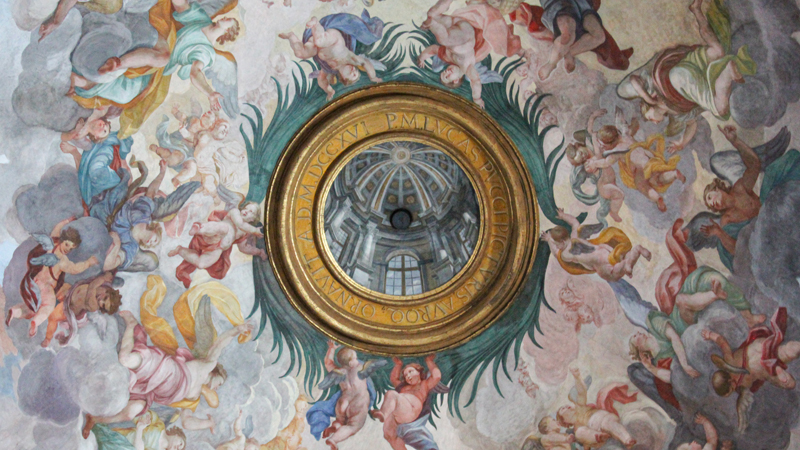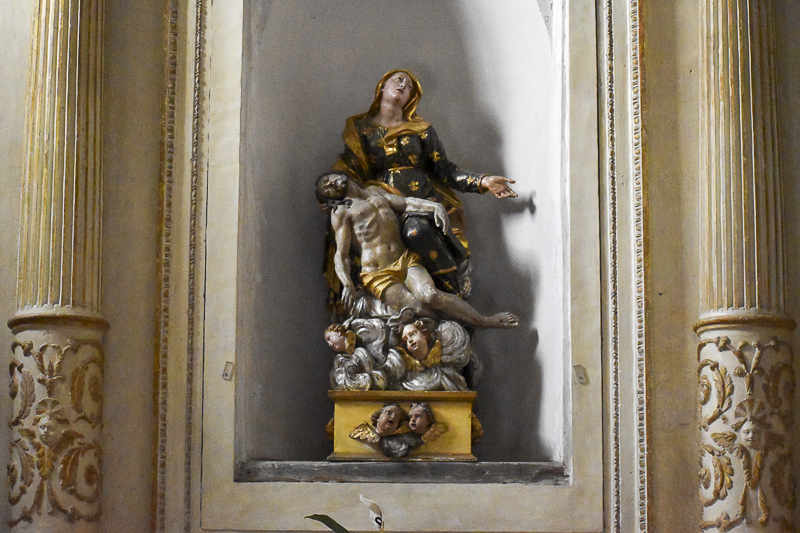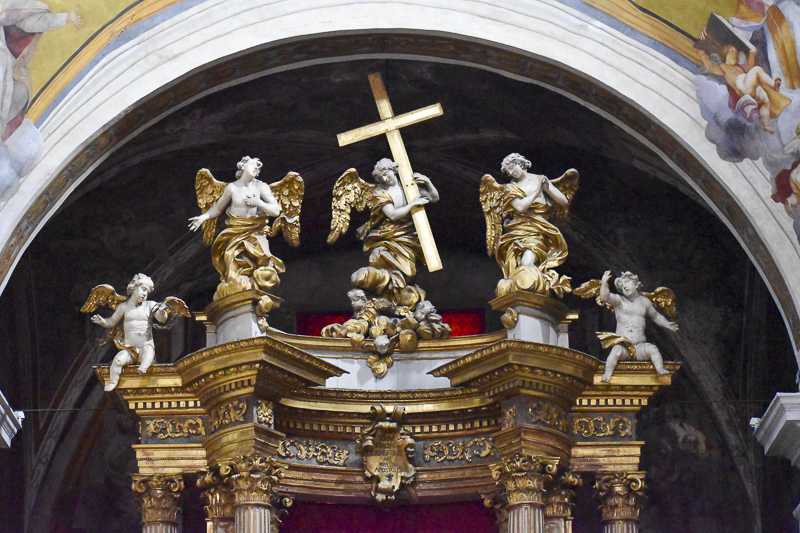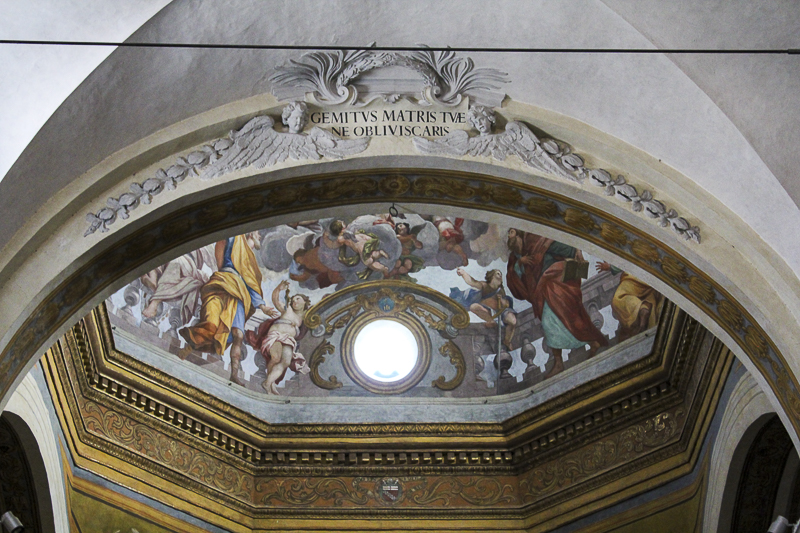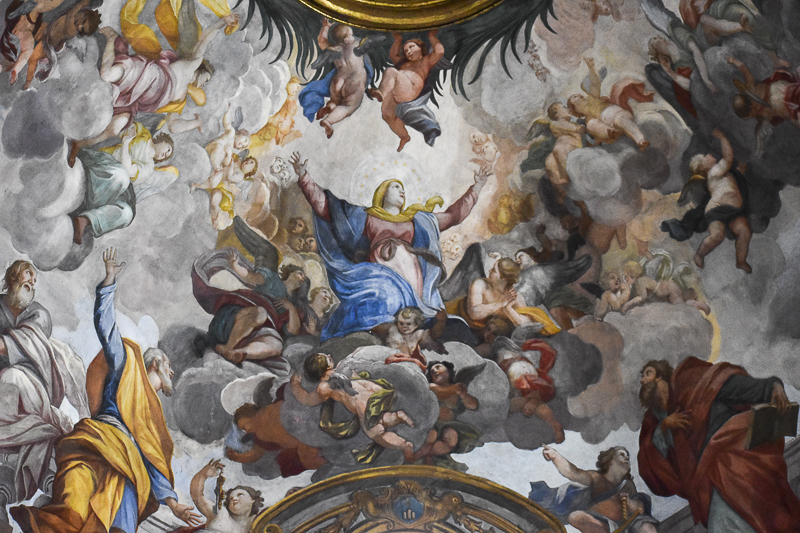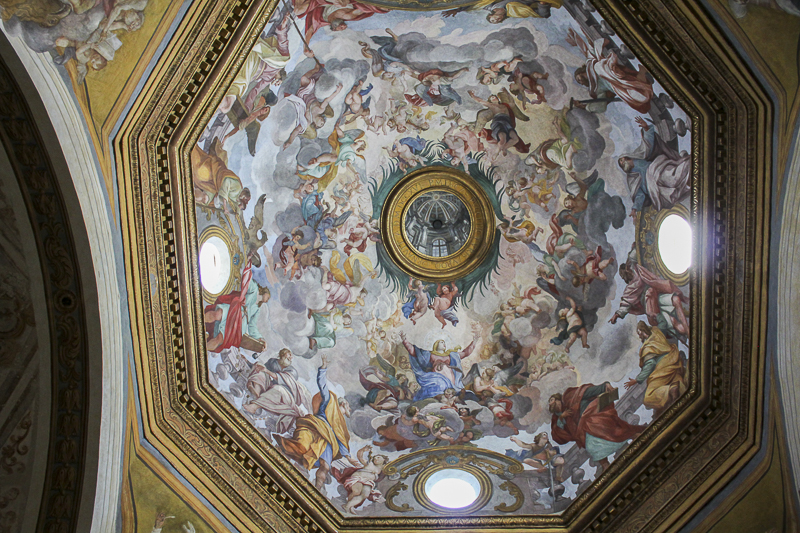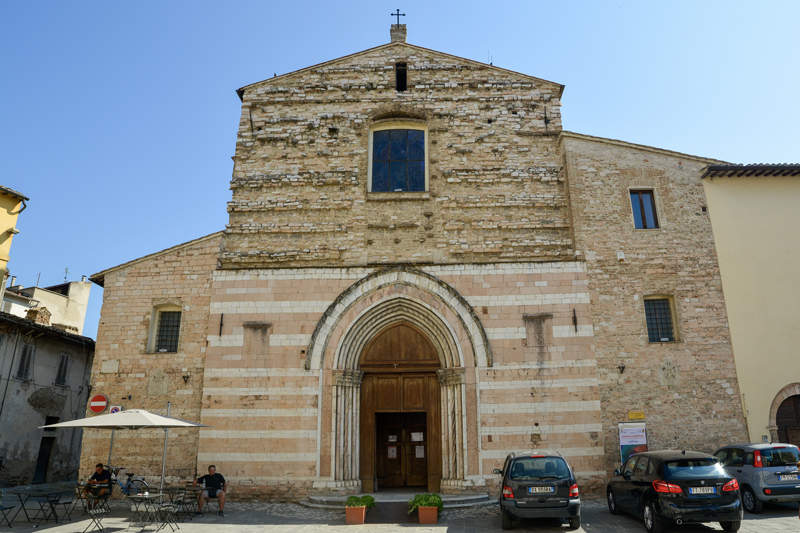This religious building, which has been known since 1210, stands on the square having the same name. In 1273, after being used as a hospital, it became a convent of the order of the Servants of Mary. The façade in white and pink bands dates back to the fifteenth century, as the dome does (later frescoed by Giuseppe Nicola Nasini), while the interior with three naves was rearranged in the eighteenth century. The upper part of the bell tower dates back to 1605. In addition to the frescoed choir and organ (dated 1857), the church has numerous paintings that adorn the altars along the walls of the naves. The high altar is dominated by an imposing wooden structure decorated in white and gold with columns and statues, among which there are those representing Saint James Major and Saint James Minor, at the sides of the Madonna of Sorrows. The adjoining convent has belonged to the order of the Servants of Mary for centuries. The cloister, on two levels and completed in different eras, featured a statue of St Philip Benizi, dated 1660, in the centre, currently located in the civic cemetery.

Il progetto Divina Foligno è sviluppato nell’ambito del “programma Agenda urbana di Foligno Smart community - Comunità, Sostenibilità – Foligno 2020” intervento OT.6 INT_01 “Realizzazione della rete di attrattori culturali attraverso la realizzazione di itinerari culturali e tematici

The Divina Foligno project is promoted and financed as part of the "Urban Agenda of Foligno Smart community - Community, Sustainability - Foligno 2020 program" intervention OT.6 INT_01 "Creation of a network of cultural attractions through the creation of cultural and thematic itineraries"

Copyright © 2022 Landmark. All rights reserved.

